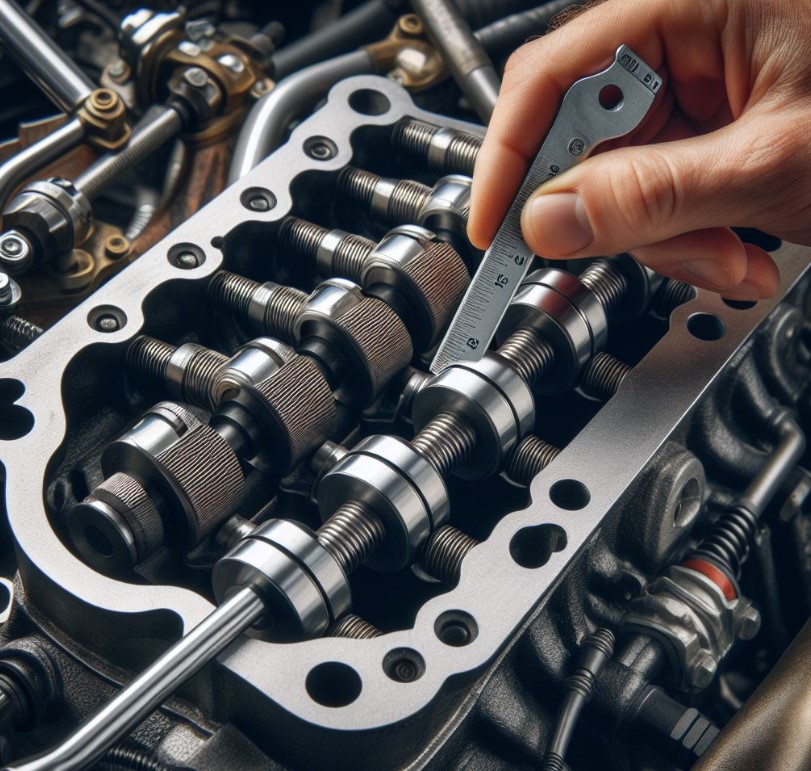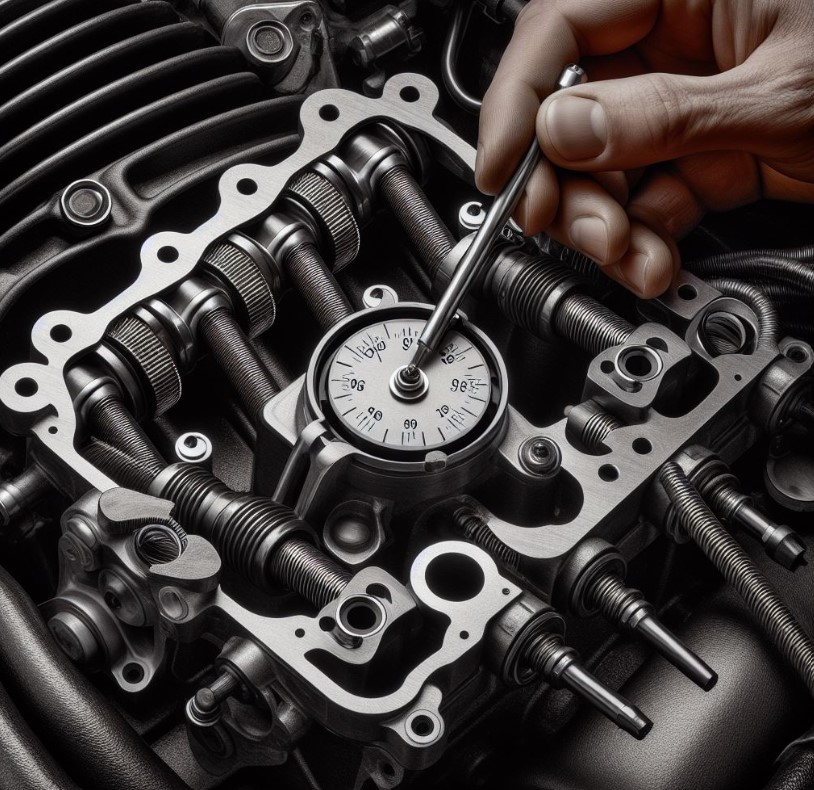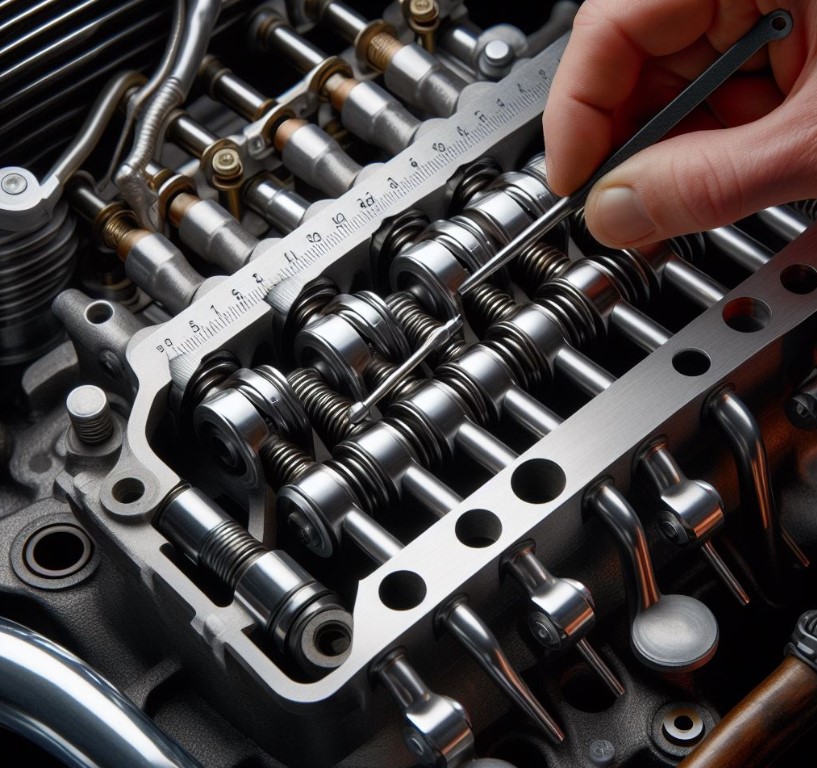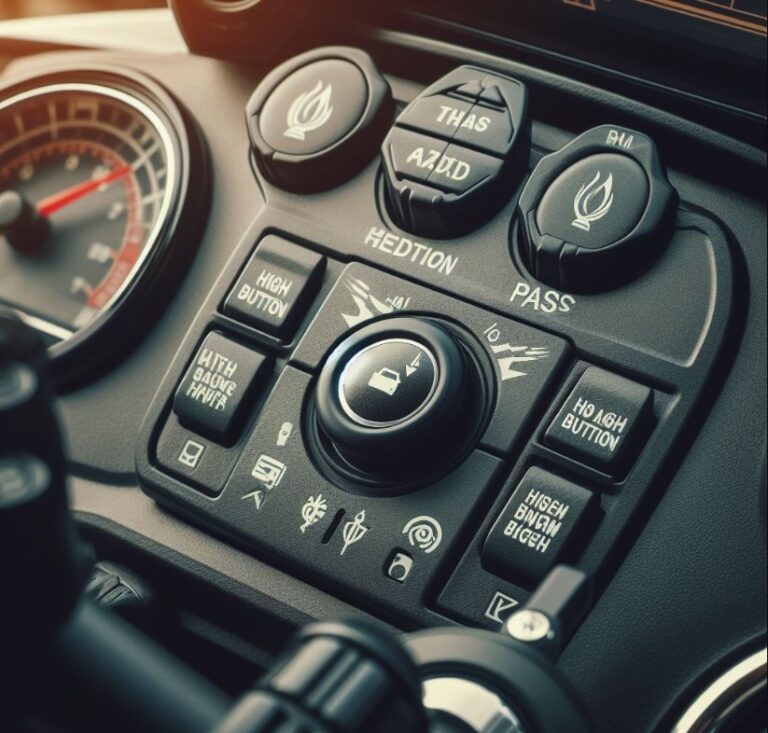How Much Is A Valve Adjustment On A Motorcycle? Answered
Understanding the cost of a valve adjustment on a motorcycle is crucial for maintaining the optimal performance and longevity of your bike. So, How Much Is A Valve Adjustment On A Motorcycle? This depends on various factors, including the type of motorcycle, labor costs, and geographic location. The procedure ensures that the engine runs smoothly, enhancing your motorcycle’s efficiency and power.
Key Takeaways
- Valve adjustments are essential for motorcycle maintenance.
- Costs vary based on motorcycle type, labor, and location.
- Regular checks prevent long-term engine problems.
- DIY adjustments can save money but require skill.
How Much Is A Valve Adjustment On A Motorcycle?
Valve adjustment is a critical maintenance task that ensures the engine’s valves open and close at the correct times. If your motorcycle is experiencing decreased performance, increased fuel consumption, or unusual noises, it might be time for a valve adjustment.
The procedure can significantly vary in cost, mainly influenced by the motorcycle model and the mechanic’s rates. Typically, owners can expect to pay anywhere from $100 to $400 for professional service. However, prices can surge for high-end or complex motorcycles.

Factors Influencing Valve Adjustment Costs
Motorcycle Type and Model
The complexity and design of your motorcycle significantly impact the adjustment cost. High-performance bikes and those with more cylinders usually demand more labor and technical expertise, leading to higher charges.
Labor Rates and Geographic Location
Labor costs vary widely depending on where you live and the service provider’s expertise. Dealerships might charge more than independent mechanics, but they often have specialized knowledge and tools.
The intricacies involved in adjusting motorcycle valves mean that costs can range significantly. For instance, simpler bikes like single-cylinder models may require less time and technical skill, resulting in lower prices. Conversely, complex engines with multiple cylinders, such as those in high-performance motorcycles, can be more labor-intensive and expensive to adjust.
Understanding the Valve Adjustment Process
Why Regular Valve Adjustments Are Necessary?
Valve adjustments ensure the longevity and efficiency of your motorcycle’s engine. Ignoring this maintenance can lead to poor engine performance, increased emissions, and even engine damage.
The Valve Adjustment Procedure
The process involves checking and adjusting the clearance between the valves and their respective tappets or cam followers. This task requires precision and understanding of your motorcycle’s specific needs based on its service manual.
Regular maintenance, including valve adjustments, is paramount for motorcycle health. It prevents engine damage and maintains performance. The procedure involves precise measurements and adjustments, highlighting the need for professional intervention unless one has the requisite skills and tools.
DIY vs. Professional Valve Adjustments
When to Consider DIY?
If you have mechanical expertise and the necessary tools, performing a valve adjustment yourself can save money. However, it requires precision and understanding of your bike’s specific requirements.
Benefits of Professional Service
Professional mechanics have the expertise and equipment to perform accurate and efficient adjustments. While it’s more expensive than DIY, it guarantees quality and peace of mind.
Deciding between DIY and professional valve adjustment depends on one’s mechanical skill level and the complexity of the motorcycle. While DIY can cut costs, the risks of incorrect adjustments can lead to severe engine issues. Professionals ensure accuracy, though at a higher price.
Preparing for a Valve Adjustment
What You Need to Know?
Understanding your motorcycle’s specific valve clearance specifications is crucial. These details are typically found in the service manual and are essential for accurate adjustments.
Tools and Equipment
The right tools are vital for a successful valve adjustment. This includes feeler gauges, wrenches, and sometimes specialized tools depending on the motorcycle model.
Preparation is key to a successful valve adjustment. This involves researching your motorcycle’s specifications and gathering the necessary tools. While it might seem daunting, proper preparation can make the process smoother and more efficient.
How Often Do Motorcycles Need Valve Adjustment?
The frequency of valve adjustments on motorcycles depends on the specific make, model, and engine type. Generally, manufacturers recommend checking and adjusting the valves every 15,000 to 20,000 miles.

However, this can vary: some motorcycles, especially those with higher performance or older models, may require adjustments more frequently, while others with less intensive use or newer, more sophisticated engine designs might need them less often.
Always refer to your motorcycle’s owner manual for the most accurate maintenance schedule. Regular maintenance checks are crucial for the longevity and efficiency of your motorcycle’s engine, ensuring that it runs smoothly and performs at its best.
What Happens If You Don’t Adjust Motorcycle Valves?
Neglecting valve adjustments can lead to a variety of engine issues. Over time, valve clearances can become too tight or too loose. If they’re too tight, valves may not fully close, causing poor engine performance and potentially burning the valves, which can lead to expensive repairs.

If they’re too loose, you might hear excessive valve noise, and the engine might lose power and efficiency. In the worst-case scenario, incorrect valve clearance can lead to engine failure. Regular valve adjustments prevent these engine problems, maintaining the engine’s health and ensuring optimal performance.
How Do I Know If My Bike Valves Need Adjustment?
There are several signs that your motorcycle valves might need an adjustment. These include a noticeable decrease in engine performance, increased fuel consumption, and difficulties in starting the engine.
You might also hear unusual noises from the engine, such as clicking, ticking, or rattling sounds, which indicate that the valve clearances are either too tight or too loose.
If the motorcycle seems to run rougher than usual, or if you experience backfiring or misfires, these could also be signs that the valves need attention.
Regular checks as part of your motorcycle’s maintenance schedule can help identify when adjustments are needed before these symptoms become severe.
Conclusion
Valve adjustments are a necessary aspect of motorcycle maintenance that should not be overlooked. The cost, ranging from $100 to $400, varies based on several factors, including your motorcycle’s model and the mechanic’s rates. While DIY adjustments are possible, they require a significant level of skill and precision.
For most, professional services offer a balance of expertise and peace of mind, ensuring that your motorcycle continues to operate at its best. Remember, investing in regular valve adjustments can save you from more costly repairs down the line.
Top FAQ’s
What’s the difference between hydraulic and manual valve adjustments?
Motorcycles with hydraulic valve adjusters typically don’t require regular adjustments, as the system automatically maintains correct valve clearance. However, motorcycles with manual adjusters require periodic checks and adjustments to maintain proper clearance. Understanding which type your motorcycle has is important for maintenance.
Can valve adjustment improve my motorcycle’s performance?
Yes, correctly adjusted valves ensure optimal engine performance and efficiency. This can lead to smoother acceleration, better fuel economy, and overall improved ride quality.
Is a valve adjustment covered under motorcycle warranty?
This depends on your warranty terms and conditions. Routine maintenance, like valve adjustments, is typically not covered under warranty. However, if a defect related to manufacturing affects the valves, this might be covered. Always check your warranty documentation for details.
What happens if I don’t adjust my motorcycle’s valves?
Neglecting valve adjustments can lead to several problems, including reduced engine performance, increased fuel consumption, and excessive noise. Over time, incorrect valve clearance can cause significant engine damage, leading to costly repairs.

Welcome to the exhilarating world of Matt Rex, a professional car racer turned renowned vehicle enthusiast. Immerse yourself in his captivating blog as he shares heart-pounding adventures, expert reviews, and valuable insights on cars, trucks, jets, and more. Fuel your passion for speed and discover the beauty of vehicles through Matt’s engaging stories and meticulous expertise. Join the ever-growing community of enthusiasts who find inspiration and expert advice in Matt Rex’s blog—a digital hub where the thrill of speed meets the pursuit of knowledge.







